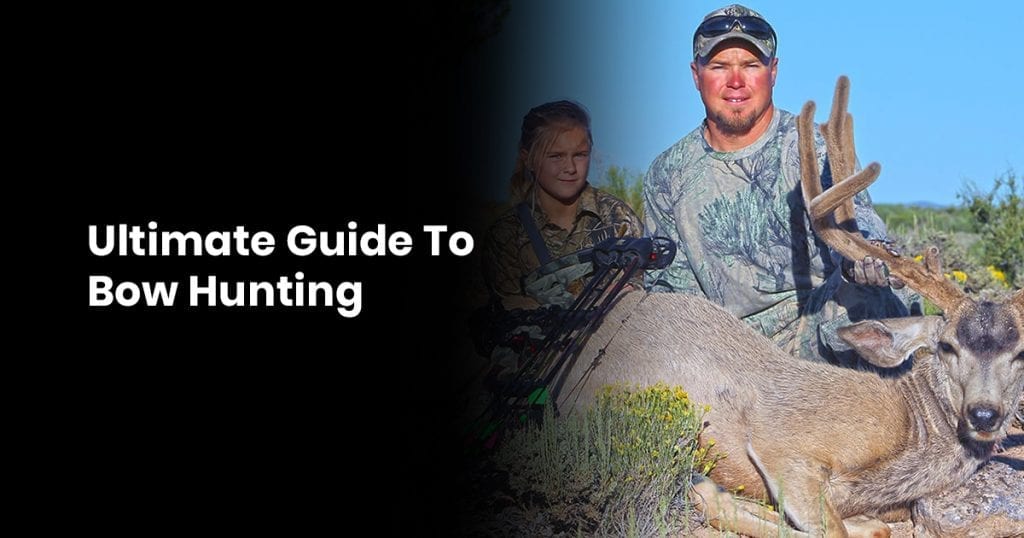For as long as man has been around for a long time, we’ve been trying to develop newer, better ways to hunt.
In Africa, for the first time in about 64000 BC, they were up against much faster prey, and even had to deal with more intimidating predators to defend themselves against.
The result was, as far as historians know, some of the most brutal and broad arrows ever made, where archery took flight and spread across the world like wildfire.
Nowadays, more and more people are hunting with a more traditional bow and the bow guy agrees its a great way to chill out.
Bow hunting gives you this sense that you’re as close to your prey as possible.
Good bow hunting, gives you the feeling of precision, an adrenaline rush you get while firing a bow and arrow.
Why is Bow Hunting so Popular Nowadays?
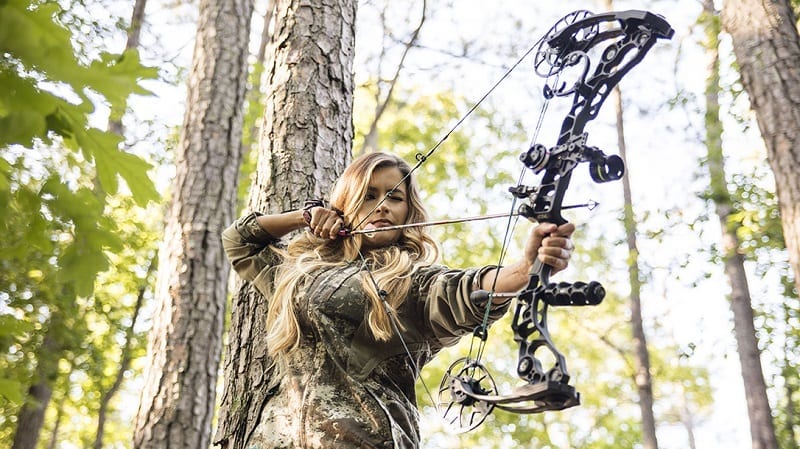
There’s a few reasons, but one of the biggest, at least in North America, is the longer hunting season.
If you’re a hunter, you really, really get a rush from the spirit of the hunt (of course, the game meat is nice as well).
This can give you six to ten more weeks of hunting under most state laws.
When you pull back on a bowstring and release, the biggest thing is an overwhelming sense of exhilaration that flows through your body like lightning, tingles down your spine stuff.
Using a recurve bow for instance, you have to engage muscles and slow your breath when you’re aiming.
It’s more intimate; your skill alone defines the hunt.
You have to focus on arrow speed, draw weight, wind speed and hitting your target in the right spot.
That being said, it’s also becoming popular because of that challenge.
You’ll see an increasing number of hunters in online forums talking about how simply hunting with the use of crossbows.
Perfectly hitting your target practice with an arrow from two-hundred feet away, or longer distances at an archery range certainly test your archery skills.
History of Bow Hunting
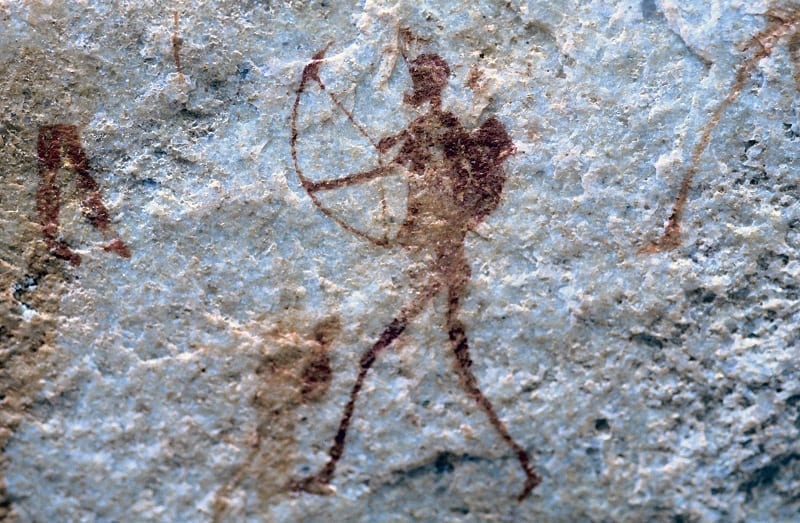
It goes back to 64000 BC, but there’s not much historical text from around that time.
Arrowheads have also been found from about 20000 BC during the stone age, but again, there’s minimal evidence to suggest its widespread use.
We can date archery back to about 3000 BC in ancient Egypt, where they used archery for hunting and warfare.
They were some of the first to adopt it and recognize its militaristic power and strategic highlights.
China began fiddling with archery around 1766 BC, but during the Shang Dynasty, they really took archery into an entirely new light.
Between 1027 BC and 256 BC, archery tournaments began, waged by nobles in court, which is when archery began straying from being a sole hunting or military tactic.
By the time the English adapted archery, it was the medieval era, the birth of the hardcore archer.
Archery didn’t last long though, because bow hunting had almost been completely wiped out of hunting except in tribal areas, and its military use was on the decline.
Sometime in the late 16th century to early 17th century, archery was swapped out for the rise in firearms across the globe.
In Ireland, Geoffrey Keating was alive between 1569 and 1644, and recalls archery as being a normally practiced art that was “Down to a recent period within our own memory.”
Archery and bowhunting died for a while until, we saw a resurgence in 1966.
Yes, as recent as 1966, when Holless Wilbur Allen, a Missouri resident on private land, created the compound bow and revitalized the interest in archery.
Nowadays, even in nations like South Korea (where they are the most dominant archers in the world), they use compound bows in primary school and in practice.
While compound bows are not in the olympics, archery history brings us to modern day (as this was written in 2019), because the Pan American Games will be hosting compound bows as part of their archery roster.
Bow Hunting – The Ultimate Archery Experience
Bow hunting is hands-on experience, and requires precision, backed-up with some rigorous training.
You need to be experienced with a bow long before you decide to start hunting game with it, or you’re going to miss your shots and alert your target.
The use of a bow, can be difficult, but it’s what people like about it…the challenge.
A good compound bow and arrows weigh around 4 lbs in total.
As a crossbow hunter, you know how important carry weight is for your trip.
Benefits of Bow Hunting
The main reasons you might consider beginning or switching to bow hunting.
Some of these benefits are also shared with simple archery practice for sport or competitive purposes.
Improves Hand-Eye Coordination
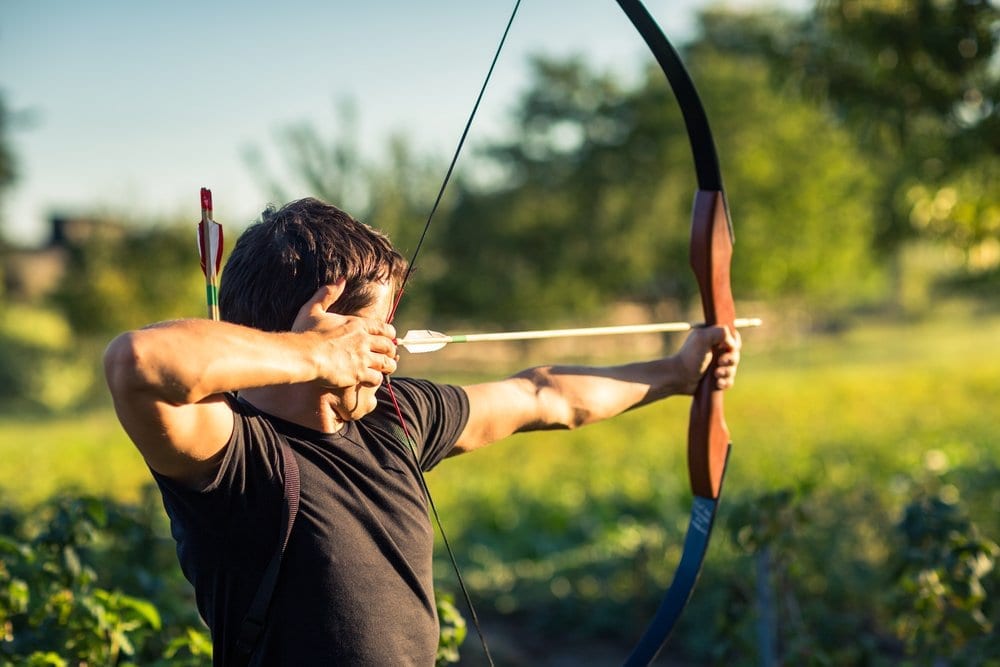
Hand-eye coordination is using the input to your eyes to determine how far and quickly to move your hand to get the desired outcome.
If you lack hand-eye coordination, archery will help quickly build that.
While other activities such as exercise and video games can build your hand-eye coordination, there’s never a time where it matters more than landing archery targets in hunting to test your physical prowess a little bit.
If you don’t land it, then you have to have a conversation with yourself.
No hunter is going to hit every shot, but now you have to reevaluate your skills and sharpen them up.
To those of us who love improving ourselves and making our hunting skills that much more fine-tuned, this is a huge benefit, not a setback.
Besides that, another benefit in this list will be enacted if you miss that shot and have to hunt the next prey.
Ammunition Costs
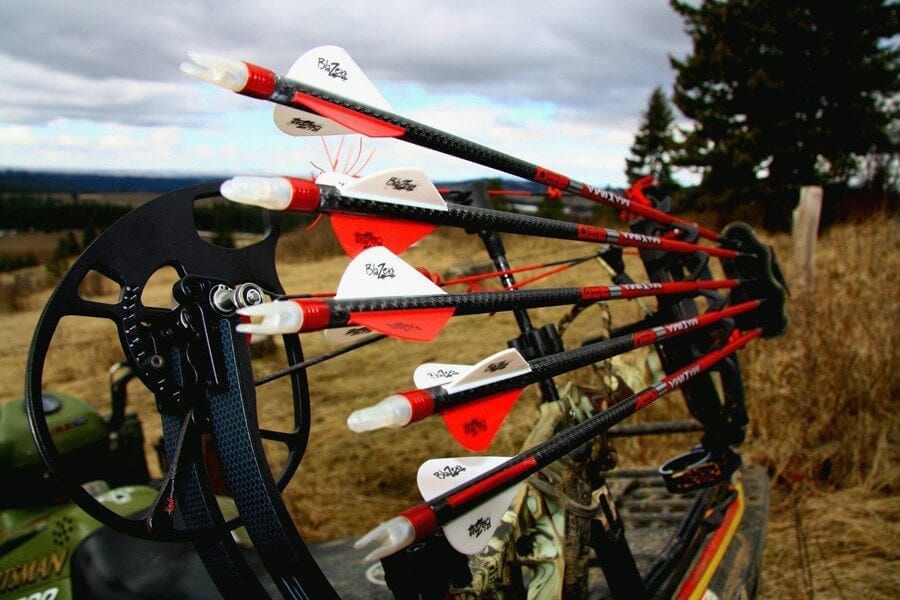
Bow Hunting Gear You Need
Competitive archery just requires you, your bow, arrows, and maybe a few fixings.
Well, that’s not going to cut it for bow hunting.
You need a lot more, including a hunting bow, sight, quiver, arm guard and a release, with a bow case.
Other items beyond this are optional, but you really should be using this simple set of items for hunting.
Let’s dig into each and discuss what you need from them.
Hunting Bow
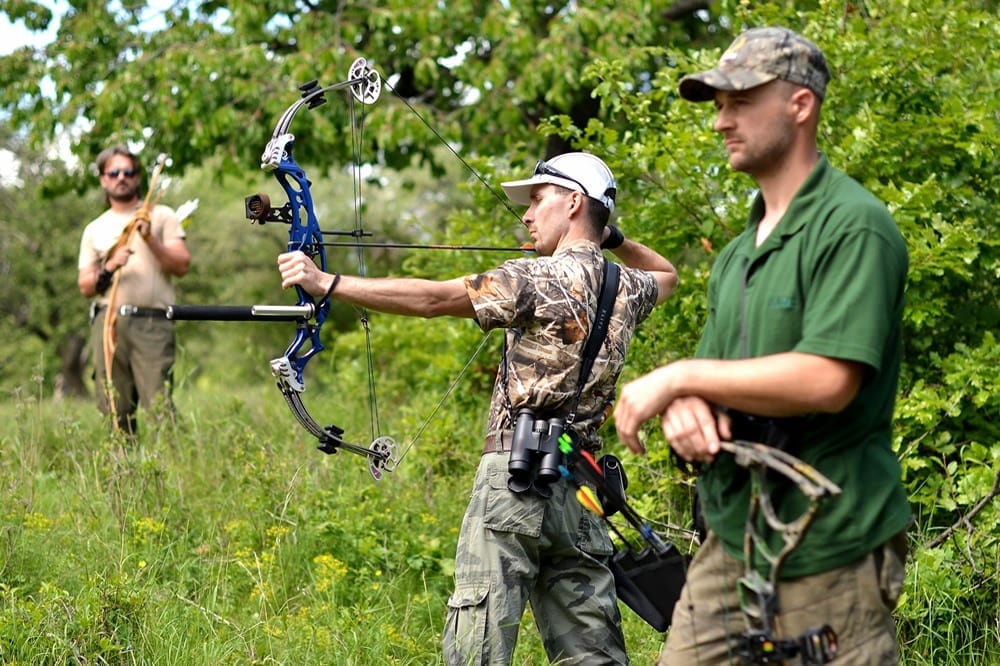
Where are you going to be without your hunting bow?
You have to make a choice between compound, recurve or crossbow, but whatever you pick, just be sure that it’s gone through a regular maintenance check on all archery gear before you begin hunting.
Look at limbs for cracks, strings for wear, and ensure all safety mechanisms on crossbows are completely locked.
Bow Sight
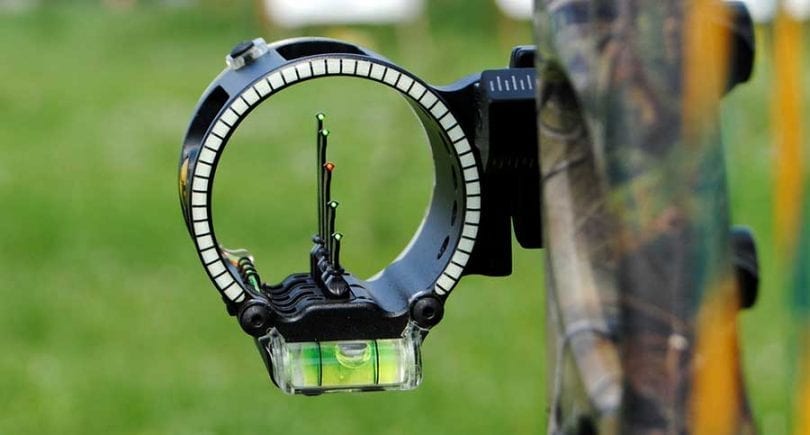
Sights are important, no matter what bow you’re using.
Compound bows have a lot going on and practically require them, they’re a good idea for modern crossbows, and they’re useful on a recurve bow.
The real reason you need one is due to visibility.
You’ll be in a tree stand or up on a ridge, and that’s going to alter your line of sight.
There’s more in your way, so your judgment will be altered regardless of how skilled an archer you are…that’s the good news.
Bow sights ironically add something else into your line of sight, but they also give you something to focus on.
You don’t worry about the arbitrary variables quite as much, and some glass lenses even offer an HD resolution.
It sounds silly since you’re not looking at a television, but it basically filters certain levels of light to clear up what you’re seeing.
More greens and less white light, usually.
Quiver
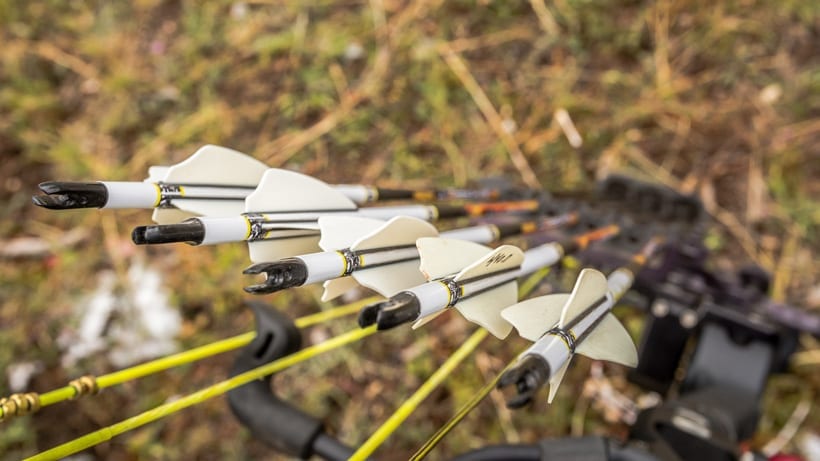
A fairly basic part of your archery outfit.
A quiver is the caddy for your bow, but the lock and cover matter, as well as the capacity.
Alternatively, most compound bows also have 3-7 arrow slots on the side of the body (non-dominant side) so you can quickly grab another arrow and fire in rapid succession.
Arm Guard
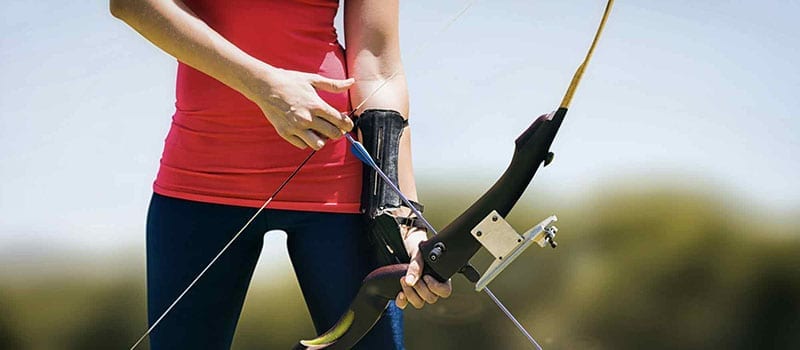
While these are often used in competitive archery, it’s also important to use them while hunting.
These protect your arms from dry firing rebound, as well as offer a bit of strength and stability.
Bow hunting has a higher chance of injury than any other type of archery in the world, and most of those are dry fire mishaps, so exercise proper care for good reason.
When you’re holding onto the string for a prolonged period of time, sometimes it just slips out of your grasp ever so slightly.
Arm guards are available in leather and synthetic materials, however, leather is your best option.
It distributes shock throughout itself, whereas synthetics will only distribute that shock in a small area.
You’ll thank us later.
Bow Release
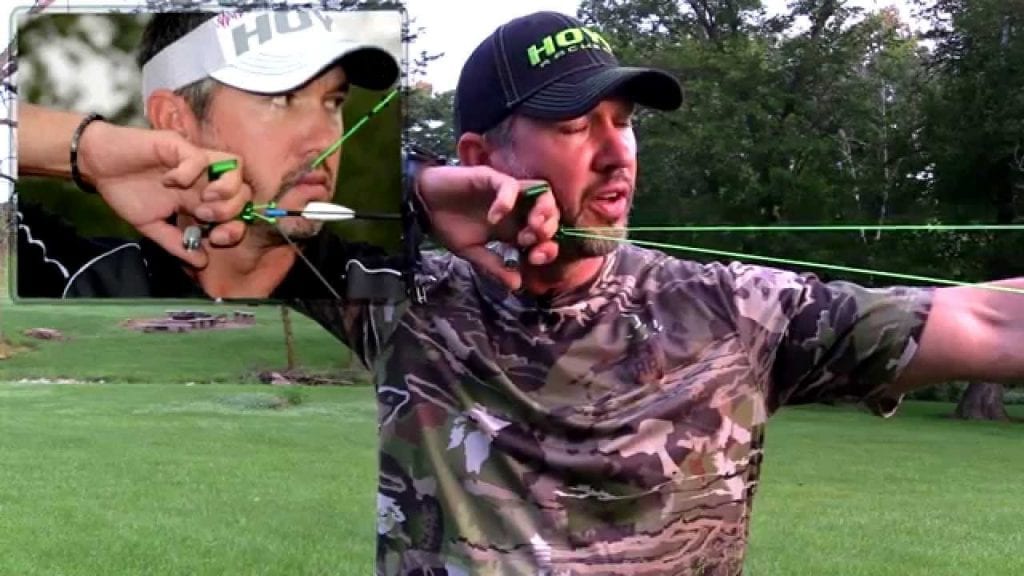
A bow release is that funny little piece of metal that you see archers holding in their draw hand, and it makes archery so much more enjoyable…certainly a good thing.
If you’re someone who wants to spend hours firing your bow, your hand is going to get tired, and your index finger is going to get very, very sore.
You should be mostly engaging arm muscles when you’re doing this, so for that, a bow release will help you out.
Bow releases grab onto the string for you, and a simple tap to the release lever will send that arrow flying.
This is excellent if you’re drawing back with the anticipation of waiting a minute or two until the perfect shot lines up to take down your prey.
You want to be completely alert at all times, and you can’t wait until your prey turns around to gain your center of gravity back and wait to pull the arrow again.
Is Bow Hunting Legal on Public Land?

Yes it is…
There’s an average of four to eight weeks of additional hunting time each year for bow hunters (varies heavily from state to state, and laws are always changing).
But it’s not legal to hunt everything. For the most part, you’re just permitted to hunt bigger game depending on where you live.
For the most part, you’re just permitted to hunt bigger game depending on where you live.
If you’re carrying a crossbow into the woods, you’re going to be under scrutiny.
So long as you meet the minimum draw weight requirement, you will be okay, but they’re going to inspect the hell out of your safety.
That being said, standard bows and compound bows need a minimum of 40 lbs draw weight, but crossbows need a minimum of 75 lbs.
In short, it’s legal to hunt with bows and there are benefits, but you’re going to need a special permit and have to follow some rules.
Quick Bow Regulation Info
- You cannot bring a loaded crossbow into a forest. You can load it once you’re in there, but it’s just as bad as a loaded gun to carry around like that. There are laws supporting this.
- You are required to wear fluorescent hunter orange clothing during rifle and muzzleloader seasons, but not during exclusive bow seasons. This is for your safety. The number of visible square inches of hunter orange change per state.
- Vertical bows require locking devices, as do crossbows. They must be locked during travel, including walking around the forest before you reach a tree stand or stationary location.
- If you’re worried about predatory animals like cougars and grizzly bears, your bow will be no match for them. Instead, you can get a firearm license to carry a sidearm (handgun) under the agreement that it is strictly for self-defense against wild animals.
- Even if it’s not currently being travelled, any public roads or trails in the forest or entrance to the hunting grounds may not be shot across. You cannot shoot prey from one side of the road over the path, or you could face serious charges. Never assume that nobody will see you.
- You still need a hunting license during archery season, and in some cases, they can be slightly harder to obtain compared to firearm hunting licenses. Apply early to ensure you’ll get it in time.
- While some states may not have a minimum draw weight requirement, it’s generally best practice to have a minimum 40 lb draw weight to comply with the regulations in other states so you don’t have to buy a brand new bow. 55 lbs of draw weight is preferred for hunting whitetail deer and smaller game for the sake of being humane in hunting.
What Type of Bow is Best for Bow Hunting?
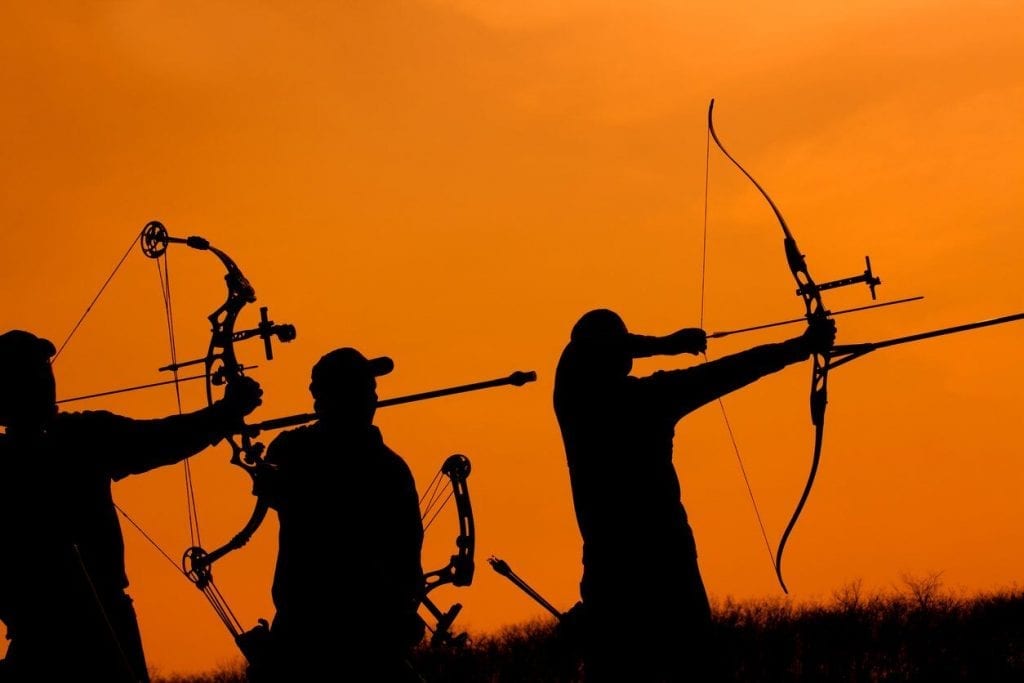
Compound bows are traditionally seen as the best hunting bows.
Though they’ve only been around since 1966, they have some of the shortest draw rates of any bow type, and that includes a crossbow.
It’s quicker to pull out another arrow from your on-hand quiver and pull back than it might be to load another crossbow bolt.
Recurves are good, and crossbows are great for hunting.
It comes down to preference and properly assessing your own skill level.
Do you often fumble shots and end up hitting the ground instead?
Well, you might be better off with a crossbow, where it has laser accuracy.
Recurves are better suited for confident hunters who know what they’re doing, as well as those with shorter firing distances.
In most scenarios, you’ll be at a distance or up in a tree stand and away from your prey.
More than 30 meters away, and you should be using a compound bow due to its quick firing and minimum draw weight requirements.
For most compound bows, you can even adjust the draw weight from 5 lbs up to 70 lbs for the perfect shot.
Just keep in mind you need 40 lbs minimum draw weight for a kill.
What Type of Game is Popular for Bow Hunting in the United States?
There’s a list called the Big 29, and it consists of the most common game to hunt in North America.
We don’t propose that you take a bow and arrow to the side of a grizzly bear (seriously, don’t do it), so these are the top four off the list that you’ll be able to hunt without fear of being mauled.
Each have their own difficulties, but that’s what makes the hunt so much fun.
If you’re heading out to hunt any of them, be sure that you have an arm guard and a proper sight to peek at them through the trees.
Whitetail Deer

The most common game in North America is the whitetail deer.
They breed like crazy, there’s always tens of million in supply, and in some states, they even offer limited open seasons to bring whitetail populations down.
They’re some of the most exhilarating to hunt, because they’re agile and keen to small sounds and dull scents, so you really have to mask yourself to get to them.
It’s a lot of fun to hunt them, and they offer dozens of pounds of viable meat after the kill is finished.
Pheasant
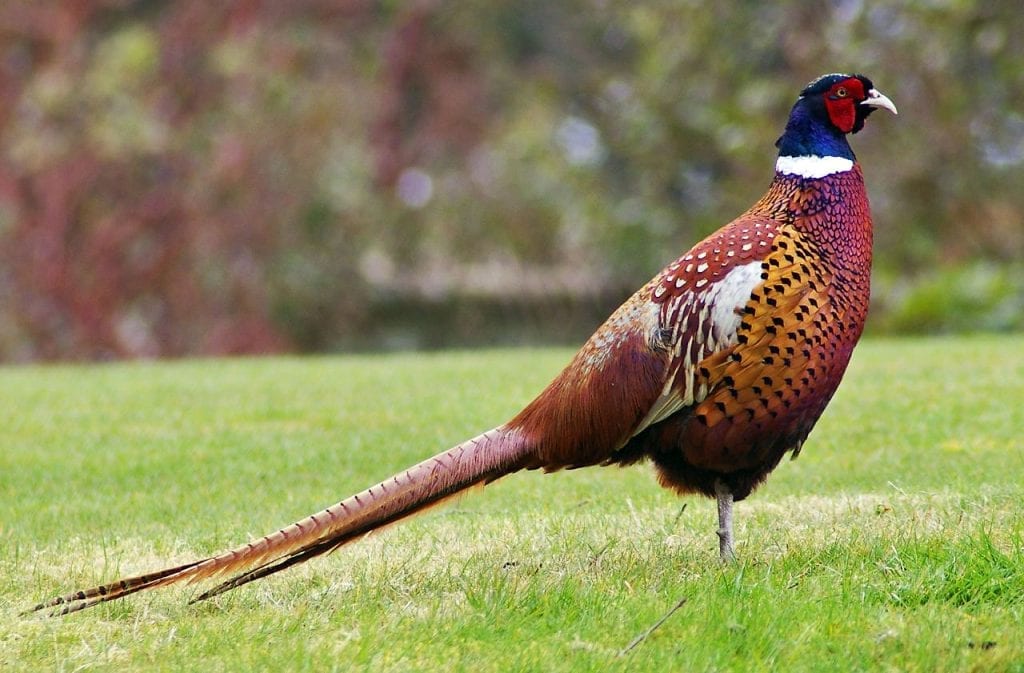
For small game, pheasant are the best to hunt. You’re going to have a hell of a time hunting these birds, but it’s part of what makes it so much fun.
Pheasant is mostly hunted on land that is owned by a gamekeeper, and for bow hunting, that’s what you want.
Since you’ll have to send an arcing shot, you don’t want to miss and have it land on a highway a mile from the forest’s edge or something along those lines.
There are specific hunting grounds that have bow hunting days so you won’t run a risk of harming anyone by accident, especially in the early morning hours.
Caribou

North American caribou is the least gamey-tasting game meat there is.
It’s actually pretty fantastic. Apart from that, they’re not going down without a fight.
Bigger and stronger than a whitetail, they might take a second or third arrow to fully take down, even if your aim is true.
A whitetail won’t exceed 300 lbs for a male, but a caribou caps out around 700 lbs; that’s a lot to take down, and it won’t go without a fight.
Caribou are fairly agile, so find a position in which you can sink another shot in them before they run for cover.
Stone Sheep

It’s not quite as popular as the others on this list, but it’s definitely a great trophy to add to the wall.
Sheep are harsh creatures (you actually don’t want to see one of them get angry, it’s pretty scary stuff), but they come down quickly from a well-placed arrow shot.
They tend to rest at higher elevations where breathing becomes slightly more difficult, so do pace yourself when you hold your breath to line up your bow shots.
You’ll be able to sink arrows into them fairly easily despite their thick pelts.
What’s the Minimum Draw Weight Requirement to Out a Deer?
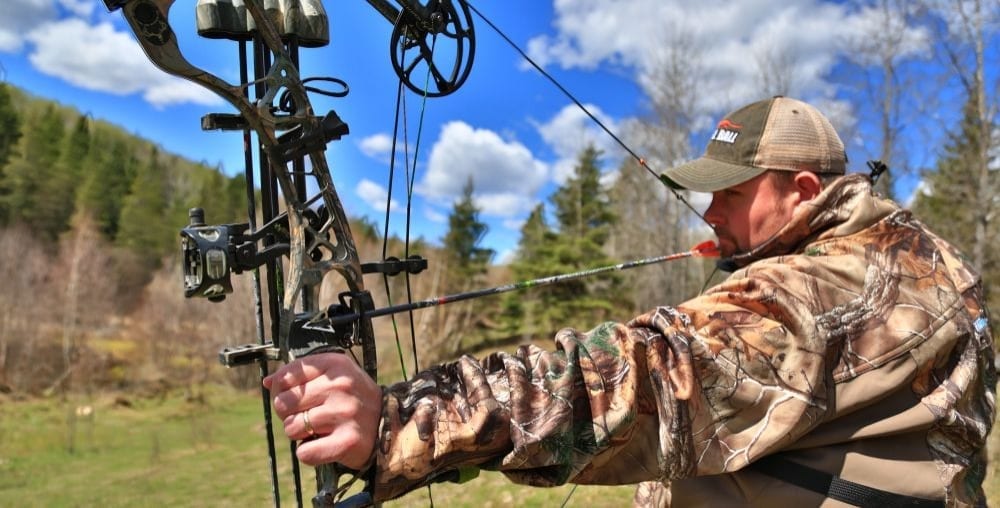
In most areas, 40 lbs of draw weight will do it.
You’ll actually see minimum requirements when looking up hunting seasons and restriction: they want at least 40 lbs, though sometimes you might see as low as 35 lbs for smaller game.
40 lbs of draw weight is enough to take down a whitetail in a single shot, provided that you know where you’re aiming.
States have minimum requirements to avoid animal cruelty, because too low of a draw weight would just vitally injure an animal, and cause it to either live with an injury or die inhumanely.
As a hunter, you know that torture isn’t the goal of hunting, and it’s understandable why they have these rules in place.
Even with state restrictions, you usually won’t see any restrictions on bow types, except in extreme circumstances.
Compound bows are what hunters mainly use nowadays, but you might see restrictions on maximum draw weight.
It’s rare, but around 70 lbs (basically max) draw weight is not allowed, and subsequently anything above that as well.
Bowmaster, Meet Master of the Hunt
From ammunition costs to keeping silence as your primary weapon, bow hunting is superior to traditional firearm hunting in so many ways.
Archery injuries are few and far between compared to firearms, and hunting in general requires a steadier hand, and an increased skill level that using a gun just doesn’t offer.
You wanted to know about bow hunting, and now you’ve got every shred of information you need to get started.
If you’re still not decided on what bow to choose from, check out our guide where we put crossbows, recurves and compounds against one another to see which declares total dominance….good luck!

